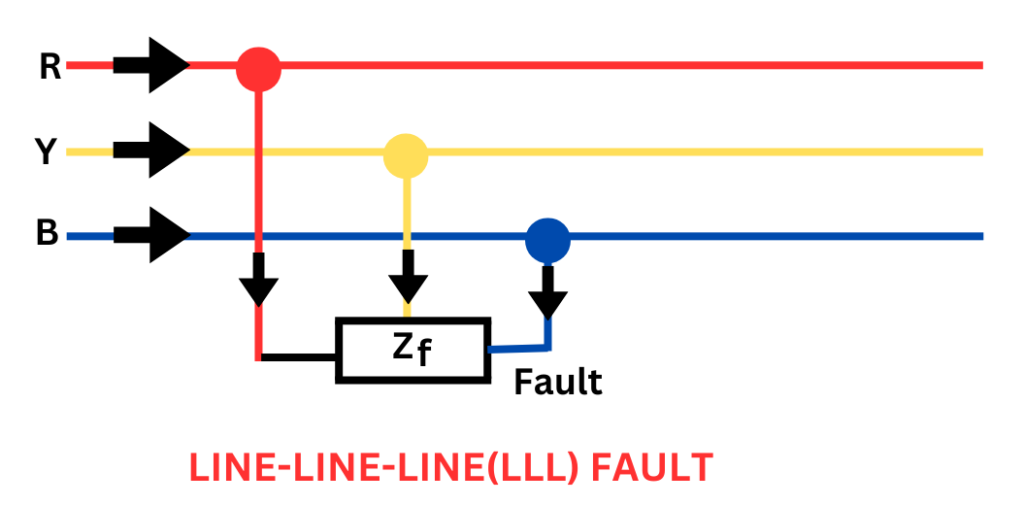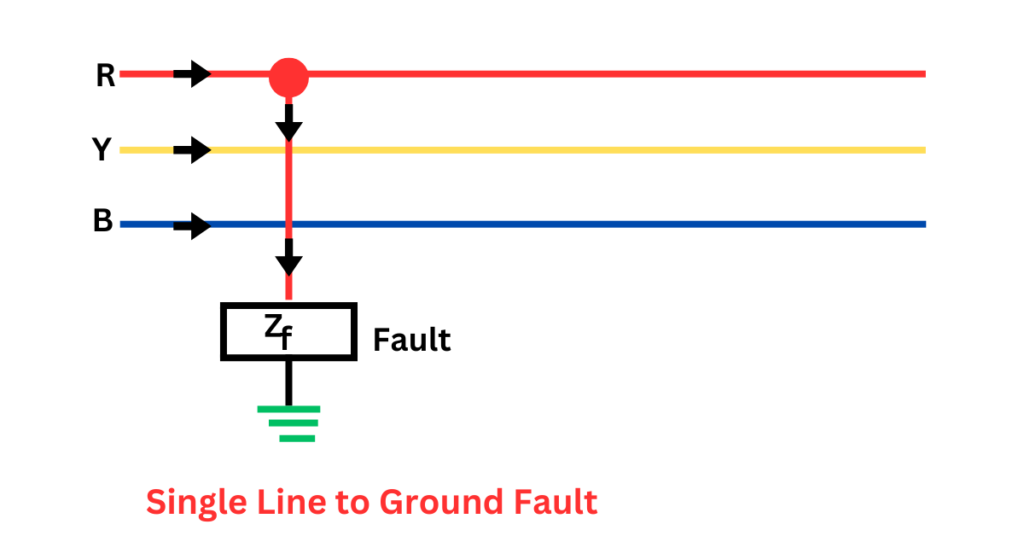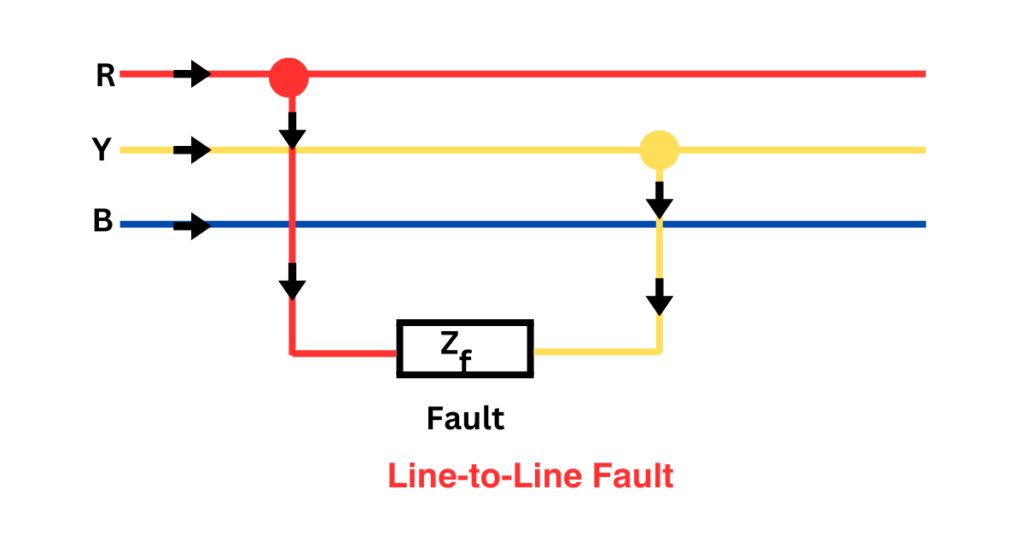This article describes the different types of faults in power system, such as LLL, LL, LG, LLG, and LLLG faults. Faults are defects that cause the current to deviate from its intended path. They create abnormal conditions that reduce the insulation resistance between conductors and can severely damage the system. Power system faults are mainly categorized into two types.
- Open Circuit Fault
- Short Circuit Fault.
The image below depicts the various types of faults that can occur in an electrical power system.

Power system faults may occur due to natural disturbances such as lightning, high-speed winds, earthquakes, accidents such as falling trees, vehicles colliding with supporting structures, or airplane crashes.
1. Open Circuit Fault
An open circuit fault is a specific type of fault that occurs when one or two conductors in a series line fail. Because of this, it is sometimes referred to as a series fault. Such faults can significantly impact a system’s reliability. The open circuit fault is categorized as follows.
- One Conductor Open Fault
- Two conductors Open Fault
- Three conductors Open Fault.
The figure below displays an open circuit fault.

2. Short-Circuit Fault
When conductors from different phases come in contact, it creates a short circuit, which leads to a sudden and large current flow in one or two phases of the system. This kind of short circuit can occur in a power line, power transformer, or any other circuit element. Short-circuit faults can be categorized as symmetrical or unsymmetrical.
Symmetrical Fault
A fault that affects all three phases of an electrical system is known as a symmetrical fault. This type of fault remains balanced even after it occurs. Symmetrical faults usually happen at the generator terminals. A fault in the system can arise due to arc resistance between the conductors or low footing resistance. Symmetrical faults are further divided into two categories: line-to-line-to-line faults and three-phase line-to-ground faults.
1. Line – Line – Line Fault: L-L-L faults are blanched faults that maintain the system’s symmetry even after the fault occurs. While the L-L-L fault is rare, it is the most severe type of fault, resulting in the largest current. This current is used to determine the circuit breaker’s rating.

2. L – L – L – G (Three-phase line to the ground fault): A three-phase line-to-ground fault affects all three phases of the power system. This type of fault, also known as an L-L-L-G fault, occurs when the three phases of the system come into contact with the ground. The probability of such a fault occurring is around 2 to 3 percent.

Unsymmetrical Fault
An unsymmetrical fault gives rise to a current that differs in magnitude and phase in the three phases of the power system. This type of fault involves one or two phases, such as L-G, L-L, or L-L-G faults. It causes the system to become unbalanced. There are three types of unsymmetrical faults: L-G fault, L-L fault, and L-L-G fault.
- Single line-to-ground (L-G) fault
- Line-to-Line Fault (L – L) Fault
- Double Line-to-Ground (L-L-G) Fault
The most common type of faults that occurs in a power system is an unsymmetrical fault.
1. Single line-to-ground (L-G) fault: The most common fault in power systems is the single line-to-ground fault, which occurs when one conductor falls to the ground or contacts the neutral conductor. This fault comprises 70-80% of all power system faults.

2. Line-to-Line Fault (L – L) Fault: A line-to-line fault happens when two conductors come into contact, causing a short circuit. This type of fault is mostly caused by strong winds that cause the line conductors to swing and touch each other. The percentage of this kind of fault is roughly around 15-20%.

3. Double Line-to-Ground (L-L-G) Fault: In a double line-to-ground fault, the two lines come into contact with each other and the ground. The probability of this type of fault occurring is approximately 10%.

The generator terminal is the main location where symmetrical and unsymmetrical faults occur, while open and short circuit faults occur on the transmission line.
Related Terms:
1. Zero Sequence Current
2. Symmetrical Impedance
3. Symmetrical Components